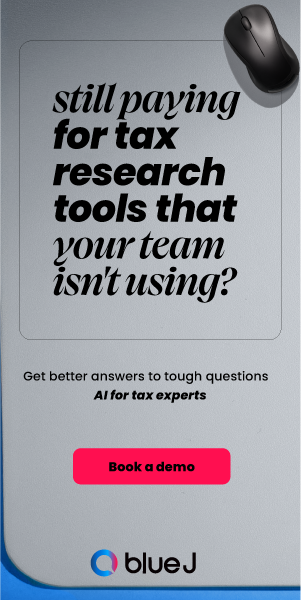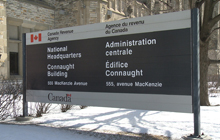Death Knell: The Canada Revenue Agency Voluntary Disclosures Program

Tax Lawyer David Rotfleisch says that, contrary to popular opinion, the CRA's changes to the VDP will affect the poor and middle class more than the rich
TORONTO – The Canada Revenue Agency ends a year of blunders and backtracks with the most egregious misstep of all: the new, curtailed Voluntary Disclosures Program (VDP). The new VDP, which was announced on Friday Dec 15, 2017 and is scheduled to take effect on March 1, 2018, will have a significant impact on the work of Canadian tax accountants and lawyers.
There was no official response to submissions, including by the Chartered Professional Accountants of Canada as well as interested parties such as our tax law firm, and the release of the new Information Circular IC00-1R6 indicates that the changes originally announced have been largely instituted. There are some changes from the draft proposals dated June 9, 2017, but they don’t mitigate the overall effect of making the new VDP singularly unattractive for many taxpayers.
The most bewildering proposal, kept intact, is the requirement to estimate taxes owing and pay the amount with the application. The misguided premise behind this proposal is undoubtedly that the VDP is primarily availed of by the rich and they can damn well pay their tax bills! Patently wrong! Just as there are far more middle-class taxpayers than rich ones, the usage of the tax amnesty program is far more prevalent in the middle class and the poor, than the rich.
Now, for taxpayers unable to pay the estimated tax, either because they planned to go bankrupt or make a consumer proposal, or those who need to make payment arrangements, VDP relief is no longer available. Not to mention the fact that the total amount of unreported income is often not known at the time of the VDP application.
If you have 10 years of unfiled returns, how can you possibly know your tax liability prior to submission of the returns? Presumably a voluntary disclosure can’t be submitted until tax returns are prepared in order to compute the tax liability.
Other more significant changes include:
- While the new rules do not take effect until March 1, 2018, paragraph 2 states that any taxpayers who have made a no-name disclosure prior to this date will need to reveal their identity by February 28, 2018 or their application will be discarded;
- Paragraph 20 has been slightly modified to eliminate the need of the VDP to examine the taxpayer’s “culpability” – this is likely in response to concerns that the VDP was poised to become far too subjective for there to be any certainty for taxpayers;
- New paragraph 21 provides that applications by corporations with gross revenues over $250 million will be automatically considered under the “Limited Program”;
- New paragraph 22 adds new language stating that the existence of a single applicable factor will not necessarily result in assigning a request to the limited program;
- New paragraph 23 removes the draft language which would have automatically disqualified any disclosure request the subject matter of which was income that is the proceeds of a crime; and
- New paragraph 29 adds a new condition to the “voluntary” requirement. If the CRA receives information on a taxpayer’s potential involvement in tax non-compliance from a third party (for example, a leak from an offshore bank), the disclosure will not be considered voluntary despite the taxpayer having no knowledge of the information leak. This is likely a requirement introduced as a direct reaction to the Panama and Paradise Papers leaks and is probably a large part of the impetus and rationale for the VDP changes in the first place.
The other significant change is the creation of two separate “tracks” for the processing of VDP applications.
The General Program will offer taxpayers much the same relief as the current VD program; criminal prosecution will be waived, all penalties will be deleted and partial interest relief will be granted. The Limited Program severely modifies the relief offered; taxpayers will not be referred for criminal prosecution and will not be charged the civil Gross-Negligence Penalties. However, normal late-filing penalties and full interest will be applied.
The kicker is that it appears that the choice of track remains solely in the CRA’s discretion.
The CRA has released some preliminary guidance with respect to how it will choose to allocate each individual disclosure to the General or Limited programs. The CRA intends to consider a few factors which include but are not limited to:
- The overall quantum or dollar amounts involved;
- The number of years of non-compliance being disclosed; and
- The taxpayers level of “sophistication.”
Whereas, in the past, all taxpayers could be assured that if they met the objective factors they were capable of achieving full relief, the new bifurcated system introduces a level of subjectivity that creates uncertainty of outcome and severely reduces the incentive for taxpayers to come forward voluntarily.
The CRA has announced that they expect to implement changes to the new regime in two years, perhaps further curtailing the benefits and eligibility. There is no doubt in my mind that statistics will show a severe diminution in the use of the program and the tax recovered. The CRA will have to reverse some of the new rules if they will want to make the program popular again.
David J Rotfleisch, CPA, CA, JD, is the founding tax lawyer of Rotfleisch & Samulovitch P.C., a Toronto-based boutique tax law firm. With over 30 years of experience as both a lawyer and chartered professional accountant, he has helped start-up businesses, resident and non-resident business owners and corporations with their tax planning, with will and estate planning, voluntary disclosures and tax dispute resolution including tax litigation. Visit www.Taxpage.com or email David at david@taxpage.com.








(0) Comments